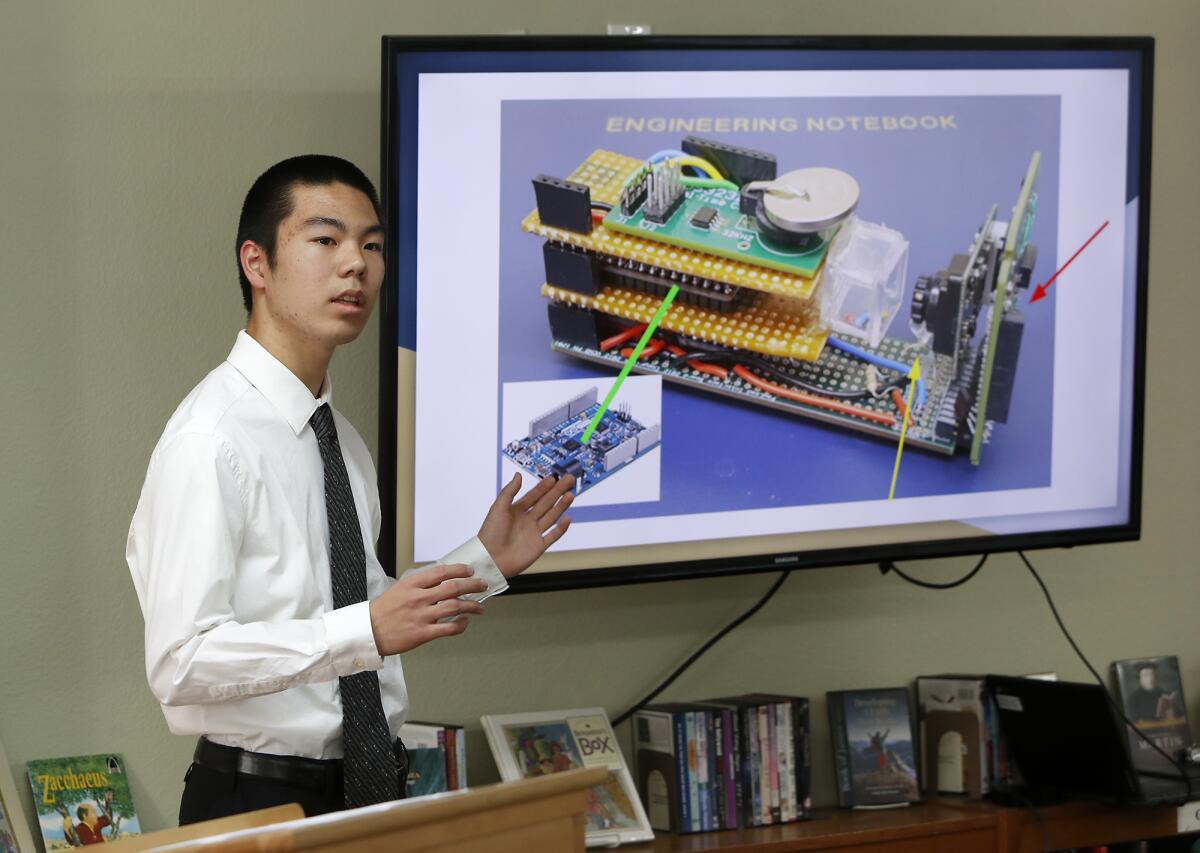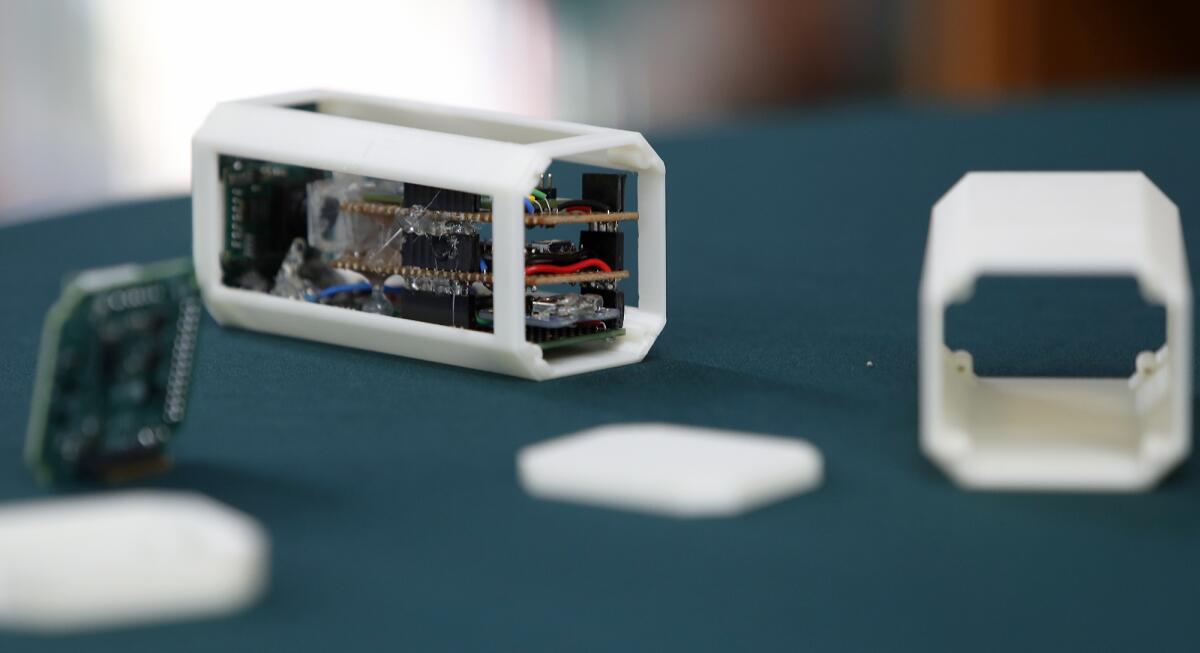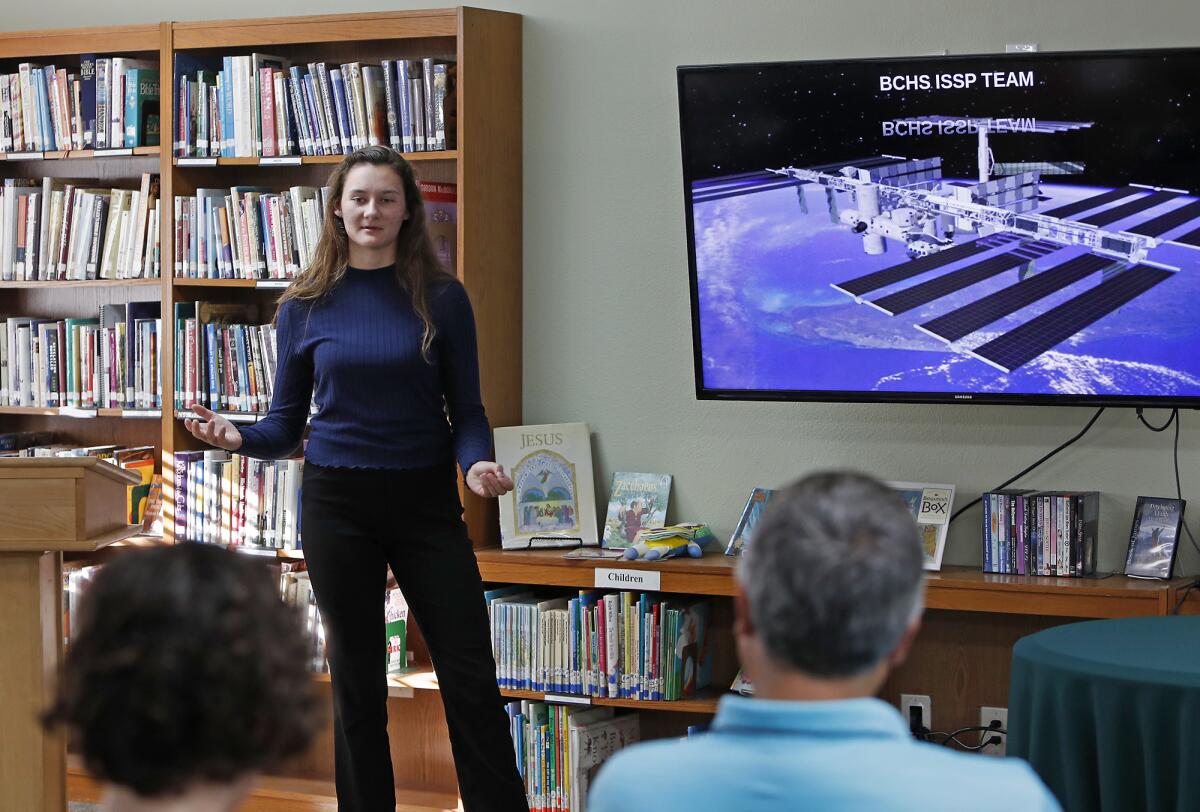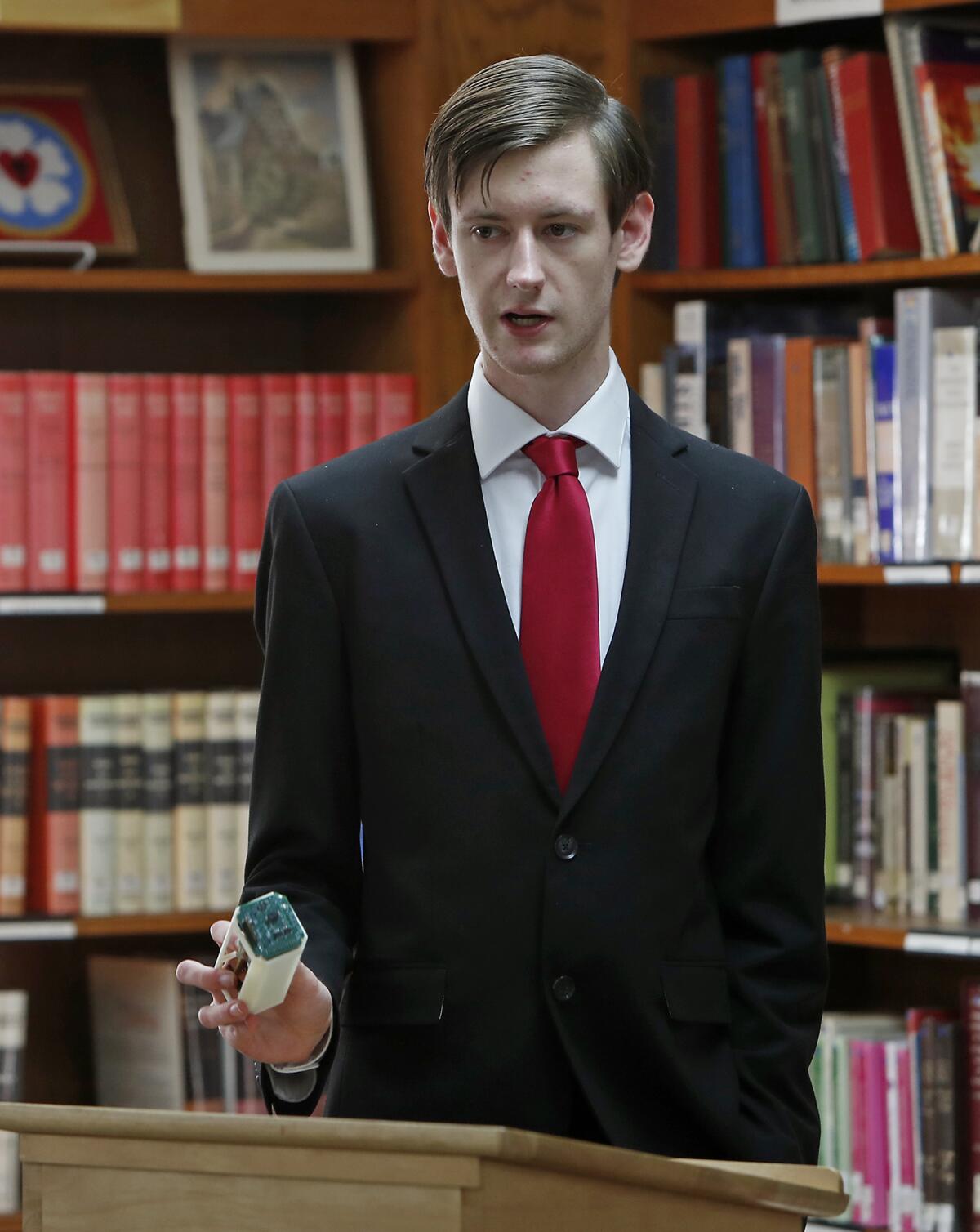Time’s up — Huntington Beach students reveal findings of their clock experiment in space

- Share via
A presentation Thursday afternoon on the results of an experiment designed by students at Brethren Christian High School in Huntington Beach to measure how a clock is affected in space was a long time coming.
Members of the private school’s International Space Station program joined up in August 2018 and met after school at least once a week to design and prepare an experiment to be rocketed into orbit this past spring.
Brethren Christian is the only Southern California school among the nine that designed experiments destined for the space station, which flies about 245 miles above Earth’s surface. It’s the first time Brethren Christian has participated.
The team settled on testing how a quartz clock is affected by the environment of space, said junior Andrew Shiroma, 17, who acted as the team’s payload manager.

The team designed an experiment to analyze a quartz-based clock and compare how it fared against an earthbound duplicate. The team built two quartz clocks, complete with an integrated camera and sensor to read temperature and humidity. One traveled to space along with an electromagnetically operated clock as a point of comparison. One quartz clock and an electromechanical one were kept in the classroom to collect similar data.
“I love space,” said junior Paige Coultrup, 16, who is interested in aerospace engineering and said she’s inspired by her sister, who is studying the treatment of space suits.

As the team’s program manager, Paige learned how to solder, analyze data and ask questions relevant to the experiment’s objective.
Colby Peterson, 18, the group’s sole 12th-grader, was the technical director and learned how to use a voltage converter and the open-source coding language Arduino to write the program for the computer onboard the clock.
He taught himself Arduino “with a little help from my dad,” he said.
Peterson is looking toward college, where he plans to study computer science to delve deeper into the skills he used in the International Space Station program.

The experiment hitched a ride to the space station on the unmanned Cygnus NG-11 cargo mission that launched April 17 from Wallops Island, Va. The students gathered to watch the launch streamed in a classroom.
The clocks spent more than a month in space, with astronauts executing the experiment for 30 days before it returned on the CRS-17 Dragon on June 3.
The students reassembled in August when school resumed to start working with the data. A month later, they had their analysis, Peterson said.
The team’s youngest member, payload specialist Kaito Ochiai, an eighth-grader who now attends Grace Lutheran School, joined the program last year while a student at Brethren Christian. He was compelled to join by his mother, he said, but once he got involved, he became more and more interested. He returned to Brethren Christian to participate throughout the semester when he could, he said.
The program’s participation has dwindled since its launch, with the school changing locations and dissolving its middle school. But four students saw the process through and presented the results of the experiment to school Supt. Matt Chavez on Thursday.
The results showed the quartz clock on the International Space Station was “more volatile, worked slower and was definitely less stable,” Peterson said. That wasn’t due to fluctuations in temperature or humidity and must be unique to the space environment, the students said.
The program cost about $15,000, of which $10,000 to $12,000 was dedicated to operating the long-distance experiment, according to Chavez.
The team partnered with Quest for Space, a program of the San Jose-based Quest Institute that trains students on creating experiments to be tested aboard the space station.
The school’s space station program is now on hiatus due to a lack of mentors to oversee the time-intensive work, but Chavez hopes it will take off in the future.
“[It’s] an absolutely great opportunity for students,” Peterson said. “You learn a lot through it.”
All the latest on Orange County from Orange County.
Get our free TimesOC newsletter.
You may occasionally receive promotional content from the Daily Pilot.




